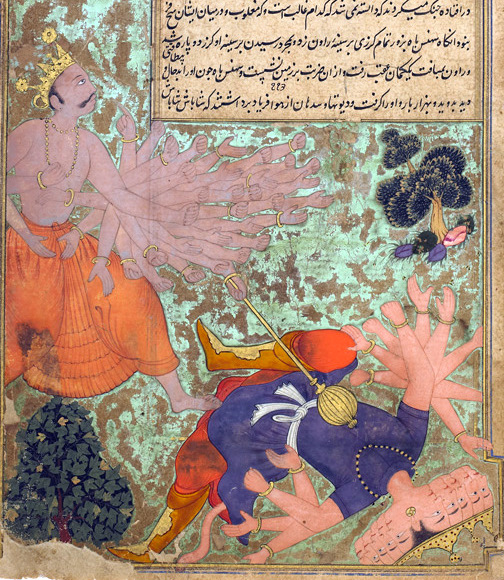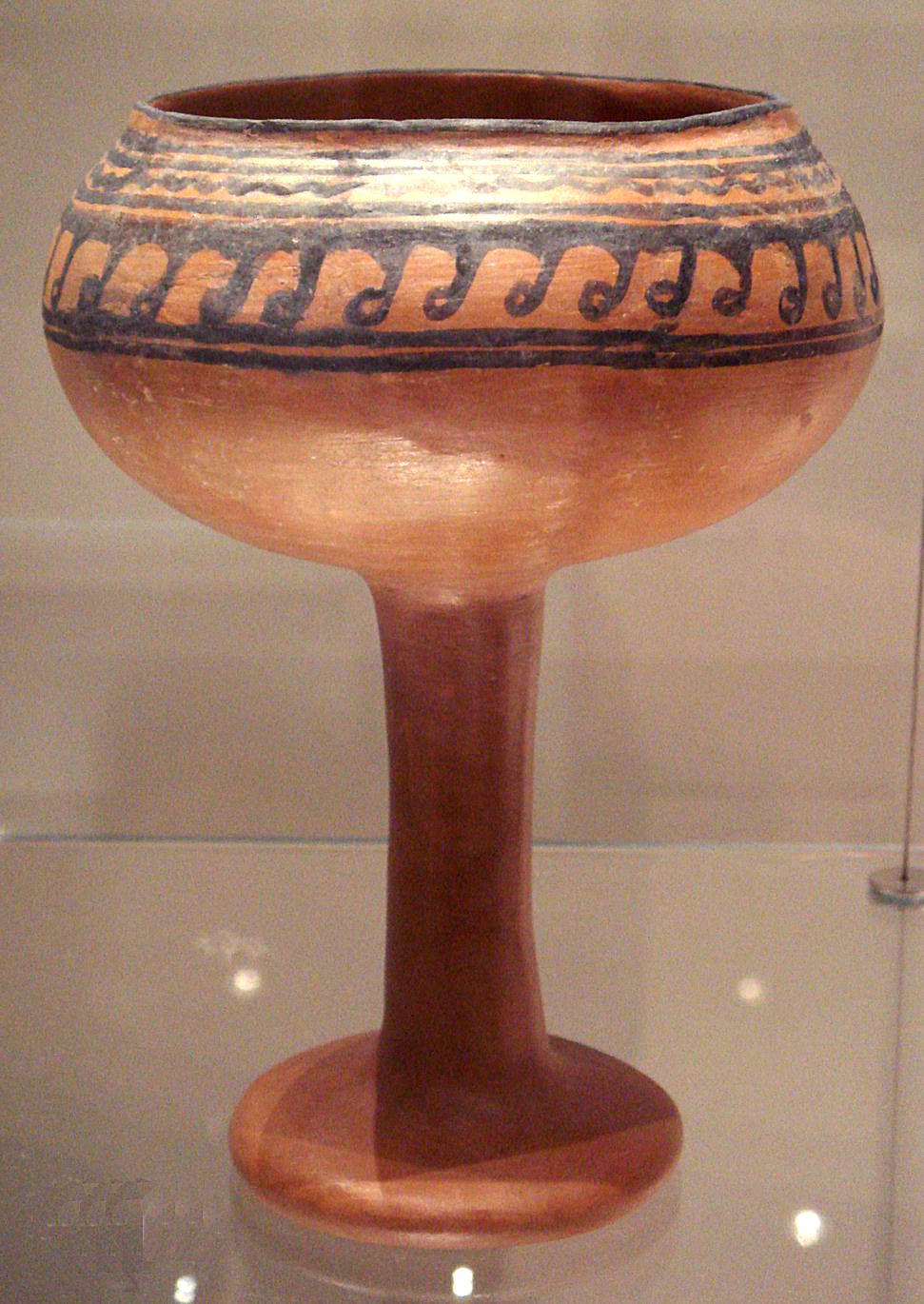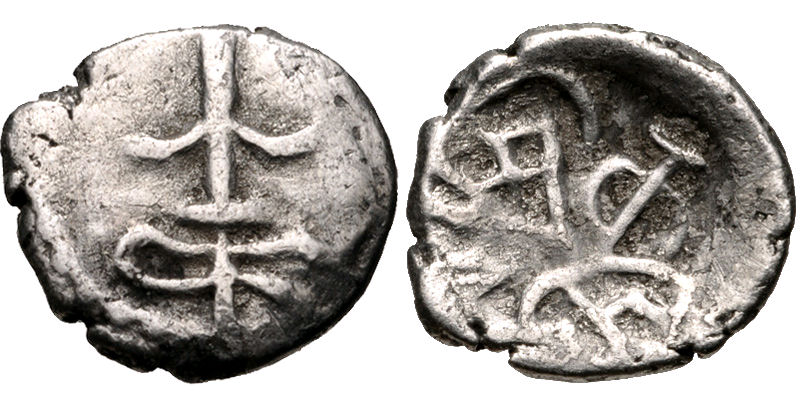|
Kalachuris Of Kalyani
The Kalachuris of Kalyani, also Southern Kalachuris, were a 10th-12th-century Indian dynasty, who ruled over parts of present-day northern Karnataka and Maharashtra. This dynasty will rise to its peak power in the Deccan region between 1156 and 1181. The rulers of the dynasty traced their origins to one Krishna, who is said to have conquered Kalinjar and Dahala in present-day Madhya Pradesh (see Kalachuris of Tripuri). Bijjala, a viceroy of the dynasty, is said to have established the authority over Karnataka after wresting power from the Chalukya king Taila III. Bijjala was succeeded by his sons Someshvara and Sangama but after 1181 CE, the Chalukyas gradually retrieved the territory. Their rule was short and turbulent and yet very important from a socio-religious point of view; a new sect known as the Lingayat or Virashaiva sect was founded during these times in a time extent of 25 years.Students' Britannica India By Dale Hoiberg, Indu Ramchandani. A unique and purely ... [...More Info...] [...Related Items...] OR: [Wikipedia] [Google] [Baidu] |
Kalachuris Of Tripuri
The Kalachuris of Tripuri (IAST: ), also known the Kalachuris of Chedi, ruled parts of central India during 7th to 13th centuries. They are also known as the Later Kalachuris to distinguish them from their earlier namesakes, especially the Kalachuris of Mahishmati. Their core territory included the historical Chedi Kingdom, Chedi region (also known as Baghelkhand#Dahala, Dahala-rajamandala, mandala), and their capital was located at Tripuri (present-day Tewar, Madhya Pradesh, Tewar near Jabalpur, Madhya Pradesh). The origin of the dynasty is uncertain, although one theory connects them to the Kalachuris of Mahishmati. By the 10th century, the Kalachuris of Tripuri had consolidated their power by raiding neighbouring territories and by fighting wars with the Gurjara-Pratiharas, the Kingdom of Bundelkhand and the Kingdom of Malwa. They also had matrimonial relations with the Rashtrakutas and the Chalukyas of Kalyani. In the 1030s, the Kalachuri king Gangeyadeva assumed the title ... [...More Info...] [...Related Items...] OR: [Wikipedia] [Google] [Baidu] |
Haihayas
In the Mahabharata epic, the Haihaya kingdom (also spelled Heheya, Haihaya, Haiheya, Heiheya, etc.) is one of the kingdoms ruled by Chandravanshi (Yadava) kings in central and western India. It was ruled by Kartavirya Arjuna, who defeated Ravana. Its capital was Mahishmati on the banks of river Narmada in present-day Madhya Pradesh. Talajangha was an allied kingdom to the east of Heheya. They conquered many other kingdoms of India until enmity with the warrior '' Bhargavas'' resulted in their demise. Parasurama was the Bhargava leader who ended the kingdom. Haihaya clans The Haihayas () were an ancient confederacy of five ''gana''s (clans), who claimed their common ancestry from Yadu. According to the Harivamsha Purana (34.1898) Haihaya was the great-grandson of Yadu and grandson of Sahasrajit.Pargiter, F.E. (1972) 922 ''Ancient Indian Historical Tradition'', Delhi: Motilal Banarsidass, p.87. In the Vishnu Purana (IV.11), all the five Haihaya clans are mentioned together a ... [...More Info...] [...Related Items...] OR: [Wikipedia] [Google] [Baidu] |
Chalukyas Of Kalyani
The Western Chalukya Empire ( ) ruled most of the western Deccan, South India, between the 10th and 12th centuries. This Kannada dynasty is sometimes called the ''Kalyani Chalukya'' after its regal capital at Kalyani, today's Basavakalyan in the modern Bidar district of Karnataka state, and alternatively the ''Later Chalukya'' from its theoretical relationship to the 6th-century Chalukya dynasty of Badami. The dynasty is called ''Western Chalukyas'' to differentiate from the contemporaneous Eastern Chalukyas of Vengi, a separate dynasty. Before the rise of these Chalukyas, the Rashtrakuta Empire of Manyakheta controlled most of the Deccan Plateau and Central India for over two centuries. In 973, seeing confusion in the Rashtrakuta empire after a successful invasion of their capital by the ruler of the Paramara dynasty of Malwa, Tailapa II, a feudatory of the Rashtrakuta dynasty ruling from Bijapur region defeated his overlords and made Manyakheta his capital. The dynast ... [...More Info...] [...Related Items...] OR: [Wikipedia] [Google] [Baidu] |
Kalanjara
Kalinjar is a fortress-city in Banda district of Uttar Pradesh, India. It was ruled by several dynasties, including the Guptas, the Vardhana dynasty, the Chandelas, Solankis of Rewa, Mughals and the Marathas. The fortress has several temples dating back to the Gupta dynasty of the 3rd–5th centuries. It is strategically located on an isolated rocky hill at the end of the Vindhya Range, overlooking the plains of Bundelkhand. Kalinjar Fort is located on the Vindhya mountain range in Banda district. The fort is famous for its strong walls and massive gates. It houses several ancient temples, among which a Shiva temple holds special significance. ThNeelkanth MahadevTemple of Kalinjar is considered very ancient and sacred. According to legend, it is believed that Lord Shiva consumed the poison that emerged during the churning of the ocean (Samudra Manthan) at this very place. Every year, a fair is held here on the occasion of Kartik Purnima. History Etymology Kalinjar is a ... [...More Info...] [...Related Items...] OR: [Wikipedia] [Google] [Baidu] |
Mangalesha
Mangalesha (IAST: Maṅgaleśa, r. ) was a king of the Chalukya dynasty of Vatapi in Karnataka, India. He succeeded his older brother Kirttivarman I on the throne, and ruled a kingdom that stretched from southern Gujarat in north to Bellary-Kurnool region in the south, in the western part of the Deccan region. It included parts of present-day Gujarat, Maharashtra, Goa, Karnataka, and Andhra Pradesh. Mangalesha expanded the Chalukya power in present-day Gujarat and Maharashtra after defeating the Kalachuri king Buddharaja. He also consolidated his rule in the Konkan coastal region of Maharashtra and Goa after conquering Revati-dvipa from the rebel Chalukya governor Svamiraja. His reign ended when he lost a war of succession to his nephew Pulakeshin II, a son of Kirttivarman I. Mangalesha was a Vaishnavite, and constructed a Vishnu temple during the reign of his brother Kirttivarman I. He was tolerant of other sects, as evident by the Mahakuta Pillar inscription, which recor ... [...More Info...] [...Related Items...] OR: [Wikipedia] [Google] [Baidu] |
Konkan
The Konkan is a stretch of land by the western coast of India, bound by the river Daman Ganga at Damaon in the north, to Anjediva Island next to Karwar town in the south; with the Arabian Sea to the west and the Deccan plateau to the east. The hinterland east of the coast has numerous river valleys, riverine islands and the hilly slopes known as the Western Ghats; that lead up into the tablelands of the Deccan. The Konkan region has been recognised by name, since at least the time of Strabo, in the third century CE. It had a thriving mercantile port with Arab tradesmen from the 10th century onwards. The best-known islands of Konkan are Ilhas de Goa, the site of the Goa state's capital at Panjim; also, the Seven Islands of Bombay, on which lies Mumbai, the capital of Maharashtra & the headquarters of Konkan Division. Definition Historically, the limits of Konkan have been flexible, and it has been known by additional names like " Aparanta" and "Gomanchal", the lat ... [...More Info...] [...Related Items...] OR: [Wikipedia] [Google] [Baidu] |
Malwa
Malwa () is a historical region, historical list of regions in India, region of west-central India occupying a plateau of volcanic origin. Geologically, the Malwa Plateau generally refers to the volcanic plateau, volcanic upland north of the Vindhya Range. Politically and administratively, it is also synonymous with the former state of Madhya Bharat which was later merged with Madhya Pradesh. At present the historical Malwa region includes districts of western Madhya Pradesh and parts of south-eastern Rajasthan. Sometimes the definition of Malwa is extended to include the Nimar region south of the Vindhya Range, Vindhyas. The Malwa region had been a separate political unit from the time of the ancient Malava Kingdom. It has been ruled by several kingdoms and dynasties, including the Avanti (India), Avanti Kingdom, The Maurya Empire, Mauryans, the Malavas, the Gupta Empire, Guptas, the Paramara dynasty, Paramaras, The Rajput, Rajputs, the Delhi Sultanate, the Malwa Sultanate, M ... [...More Info...] [...Related Items...] OR: [Wikipedia] [Google] [Baidu] |
Kalachuris Of Mahishmati
The Kalachuris of Mahismati, or the Early Kalachuris, were an early medieval Indian dynasty that ruled present-day Maharashtra, as well as parts of mainland Gujarat and southern Madhya Pradesh. Their capital was located at Mahishmati. Epigraphic and numismatic evidence suggests that the earliest of the Ellora and Elephanta cave monuments were built during the Kalachuri rule. The origin of the dynasty is uncertain. In the 6th century, the Kalachuris gained control of the territories formerly ruled by the Guptas, the Vakatakas and the Vishnukundinas. Only three Kalachuri kings are known from inscriptional evidence: Shankaragana, Krishnaraja, and Buddharaja. The Kalachuris lost their power to the Chalukyas of Vatapi in the 7th century. One theory connects the later Kalachuri dynasties of Tripuri and Kalyani to the Kalachuris of Mahishmati. Origin The origin of the Kalachuris is uncertain. In inscriptions, they are variously known as Kalachuri, Kalatsuri, and Katatchuri. ... [...More Info...] [...Related Items...] OR: [Wikipedia] [Google] [Baidu] |
Chalukyas Of Badami
The Chalukya dynasty () was a Classical Indian dynasty that ruled large parts of southern and central India between the 6th and the 12th centuries. During this period, they ruled as three related yet individual dynasties. The earliest dynasty, known as the "Badami Chalukyas", ruled from Vatapi (modern Badami) from the middle of the 6th century. The Badami Chalukyas began to assert their independence at the decline of the Kadamba kingdom of Banavasi and rapidly rose to prominence during the reign of Pulakeshin II. After the death of Pulakeshin II, the Eastern Chalukyas became an independent kingdom in the eastern Deccan. They ruled from Vengi until about the 11th century. In the western Deccan, the rise of the Rashtrakutas in the middle of the 8th century eclipsed the Chalukyas of Badami before being revived by their descendants, the Western Chalukyas, in the late 10th century. These Western Chalukyas ruled from Kalyani (modern Basavakalyan) until the end of the 1 ... [...More Info...] [...Related Items...] OR: [Wikipedia] [Google] [Baidu] |
Kalyani Chalukyas
The Western Chalukya Empire ( ) ruled most of the western Deccan, South India, between the 10th and 12th centuries. This Kannada dynasty is sometimes called the ''Kalyani Chalukya'' after its regal capital at Kalyani, today's Basavakalyan in the modern Bidar district of Karnataka state, and alternatively the ''Later Chalukya'' from its theoretical relationship to the 6th-century Chalukya dynasty of Badami. The dynasty is called ''Western Chalukyas'' to differentiate from the contemporaneous Eastern Chalukyas of Vengi, a separate dynasty. Before the rise of these Chalukyas, the Rashtrakuta Empire of Manyakheta controlled most of the Deccan Plateau and Central India for over two centuries. In 973, seeing confusion in the Rashtrakuta empire after a successful invasion of their capital by the ruler of the Paramara dynasty of Malwa, Tailapa II, a feudatory of the Rashtrakuta dynasty ruling from Bijapur region defeated his overlords and made Manyakheta his capital. The dynast ... [...More Info...] [...Related Items...] OR: [Wikipedia] [Google] [Baidu] |
Vachanas
Vachana sahitya is a form of rhythmic writing in Kannada (see also Kannada poetry) that evolved in the 11th century and flourished in the 12th century, as a part of the Sharana movement. The word "vachanas" literally means "(that which is) said". These are readily intelligible prose texts. These writings are notable for their simplicity and directness, often addressing social issues and personal devotion. They were composed in Kannada by saints of the Lingayat faith, most notably Basavanna, Akka Mahadevi, and Allama Prabhu. Vachanas critique rituals and caste discrimination, advocating a form of worship centered on Shiva, envisioned as a universal god.Ishawaran, K. (1992), Speaking of Basava: Lingayat Religion and Culture in South Asia, Westview Press, ISBN 978-0813383897 Vachanas and Sharana movement More than 200 Vachana writers (''Vachanakaras'' also known as Sharanas) have been recorded and more than thirty of whom were women.Sastri (1955), p. 361Other well known Vachan ... [...More Info...] [...Related Items...] OR: [Wikipedia] [Google] [Baidu] |







